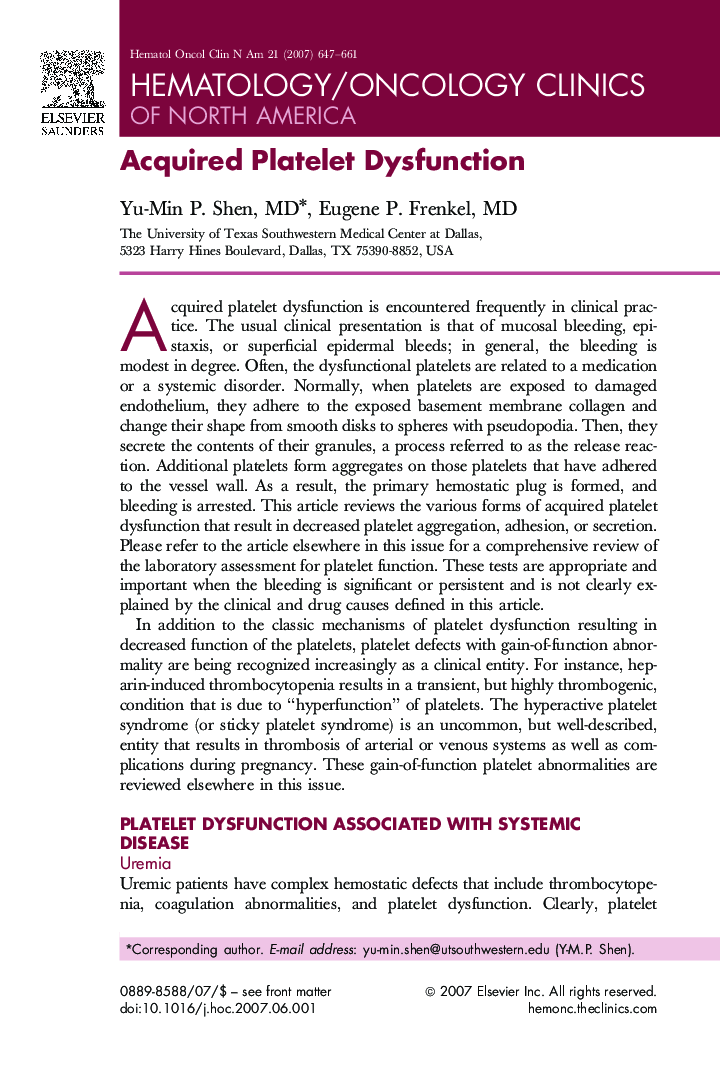| Article ID | Journal | Published Year | Pages | File Type |
|---|---|---|---|---|
| 3331957 | Hematology/Oncology Clinics of North America | 2007 | 15 Pages |
Acquired platelet dysfunction is encountered frequently in clinical practice. The usual clinical presentation is that of mucosal bleeding, epistaxis, or superficial epidermal bleeds. Often, the dysfunctional platelets are related to a medication or a systemic disorder. Normally, when platelets are exposed to damaged endothelium, they adhere to the exposed basement membrane collagen and change their shape from smooth disks to spheres with pseudopodia. Then, they secrete the contents of their granules, a process referred to as the release reaction. Additional platelets form aggregates on those platelets that have adhered to the vessel wall. As a result, the primary hemostatic plug is formed, and bleeding is arrested. This article reviews the various forms of acquired platelet dysfunction that result in decreased platelet aggregation, adhesion, or secretion.
